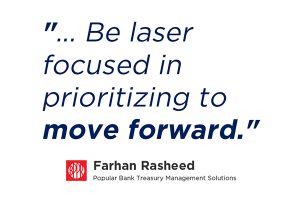A Small Business Roadmap for Reopening
Reassessing, Relearning and Rebuilding in a post-pandemic economy
As small businesses in the U.S. slowly awaken from the effects of coronavirus-related disruption and closure, much uncertainty remains.
What kind of landscape, economic, social or otherwise, will they be returning to? How will they adapt to such a landscape? Will it be possible to relaunch, rebuild and thrive again?
A sober intake of the pandemic’s sweeping toll may help us fill in parts of the picture. The data tells a difficult story.
In the National Federation of Independent Businesses (NFIB) Research Center’s survey of small businesses, which took an early snapshot of the economic fallout from the coronavirus through the month of March:
- 92% of businesses reported being negatively impacted
- 80% of businesses detailed slower sales
- 31% reported supply chain disruptions
Above all, only a third of the businesses surveyed believed they could “remain operational for 3-6 months.”
A story that hits close to home
For our team here at Popular Bank, and for many of the community-centered small businesses we serve, the reach of this story goes deeper.
Findings from a recent study by the Stanford Latino Entrepreneurship Initiative, which traced the particular impact of the pandemic on over 200 Latino-owned businesses in the U.S., show:
- 86% of businesses reporting significant negative impact (e.g., declining revenue)
- 23% of businesses having already applied for Economic Injury Disaster Loans
- 49% of businesses having made staffing and payroll reductions
You might see your own business holding somewhere between these lines. If so, you’re not alone.
 Following a small business roadmap over a playbook
Following a small business roadmap over a playbook
In a handful of key markets, certain small businesses are leading the charge in the gradual openings of public, cultural and economic space.
Under its “Full Phase 1” approach beginning May 18, Florida has permitted retail businesses, restaurants and food establishments, among others, to operate in limited capacity. On the other hand, states like New York are moving more cautiously. While commercial industries upstate have opened, smaller retail businesses, restaurants and professional services in New York City are poised to wait a bit longer.
Most business owners remain in limbo without a customized playbook for acclimating their business to a radically altered consumer environment. And that’s understandable. As Suzanne Clark, president of the U.S. Chamber of Commerce, recently acknowledged during an interview for PBS, “This is unprecedented… there’s no playbook to take off the shelf and just execute.”
However, there are small business roadmaps and resources available now, which can help you focus on important logistics as you prepare to reopen:
- Small Business & Entrepreneurship Council (SBE) offers valuable information from the CDC and federal agencies on workplace readiness measures, risk management and tax guidance. It also lists updates to the CARES Act and SBA Paycheck Protection Program (PPP). Popular Bank is an approved SBA Paycheck Protection Program lender.
- National Retail Federation (NRF) outlines practical tools and guidance for retailers reopening their business.
 Starting with the basics: Reassess
Starting with the basics: Reassess
After a sudden and lengthy shutdown, you’ll need to reassess the pandemic’s cumulative financial impact on your business. While the economic environment as you’ve known it to be may have radically changed, fundamentals for gauging your financial health have not.
Start with the basics.
Analyze your level of liquidity. Use simple, reliable tools like Business Online Banking to understand your current cash position and set up strategies to improve your operational cash flow in the immediate term—e.g., over the next 3 to 6 months.
Can you find ways to further tighten your cash conversion cycle, even in a new and unfamiliar economic climate? Because in seasons of uncertainty, it may be wise, as a recent Deloitte report suggests, to “apply a coordinated approach” that addresses your payables, receivables and inventory in a balanced way.
Farhan Rasheed, Head of Treasury Management Solutions at Popular Bank, advises that regardless of economic moment or season:
“Small businesses must be laser focused in prioritizing to move forward. Banks have a tremendous opportunity to help in this journey through services that help digitize and automate to make customers’ cash flow frictionless.”
 What your customer needs now: Relearn
What your customer needs now: Relearn
Since it’s unlikely your business will simply pick up where you left off, the same will be true for your customer. Staying customer centered should remain your priority, now more than ever. But their needs may have changed since the last time you were open.
In a post-pandemic environment, you may need to relearn an evolving set of consumer needs, expectations and behaviors. For example, given consumer hesitancy for engaging in in-person, touch-to-surface experiences, can you implement contactless payments to promote convenience and safety?
Or, can you further encourage customer self-sufficiency by developing low-touch digital solutions and/or enhancing your current online or mobile presence? (We recently launched a series of messaging efforts to better steer customers toward Online and Mobile Banking.)
For businesses that depend heavily on in-store consumer engagement, there may be additional practical concerns. How can you plan to retrofit your interior space for social distancing? Are there ways you can balance a social distancing environment with consumer experiences that foster personal and community connection?
 Staying flexible but true to your purpose: Rebuild
Staying flexible but true to your purpose: Rebuild
Reassessing your financial health and relearning customer behaviors and needs are necessary steps for a rebuild and later, growth.
But you’ll need to stay creative and flexible. Can you find new ways to reframe and retell the story of your product or service? You may even be compelled to pivot from your initial business model to survive and deliver value in a new economy.
Some businesses have already gotten started. While many sit-down restaurants pivoted early on to become takeout-only services or bundled-meal wholesale markets, others, like certain consumer apparel companies, shifted their focus to producing hospital gowns.
But even as you consider shifting your strategy in the short term, it’s always important, as Laura Huang of Harvard Business School tells the New York Times, to “grow where [you] are planted.” That means staying true to the core values and competencies that made your business thrive in the first place.
However you move forward, leverage your business financing options, which can help strengthen cash flow deficiencies, accommodate changing workforce needs or boost your inventory as you prepare to reopen. And don’t be afraid to form connections with other businesses, asking yourself, as design consultancy IDEO suggests: “Who can we partner with right now to deliver something unique or previously impossible to our teams, business, or society?”

